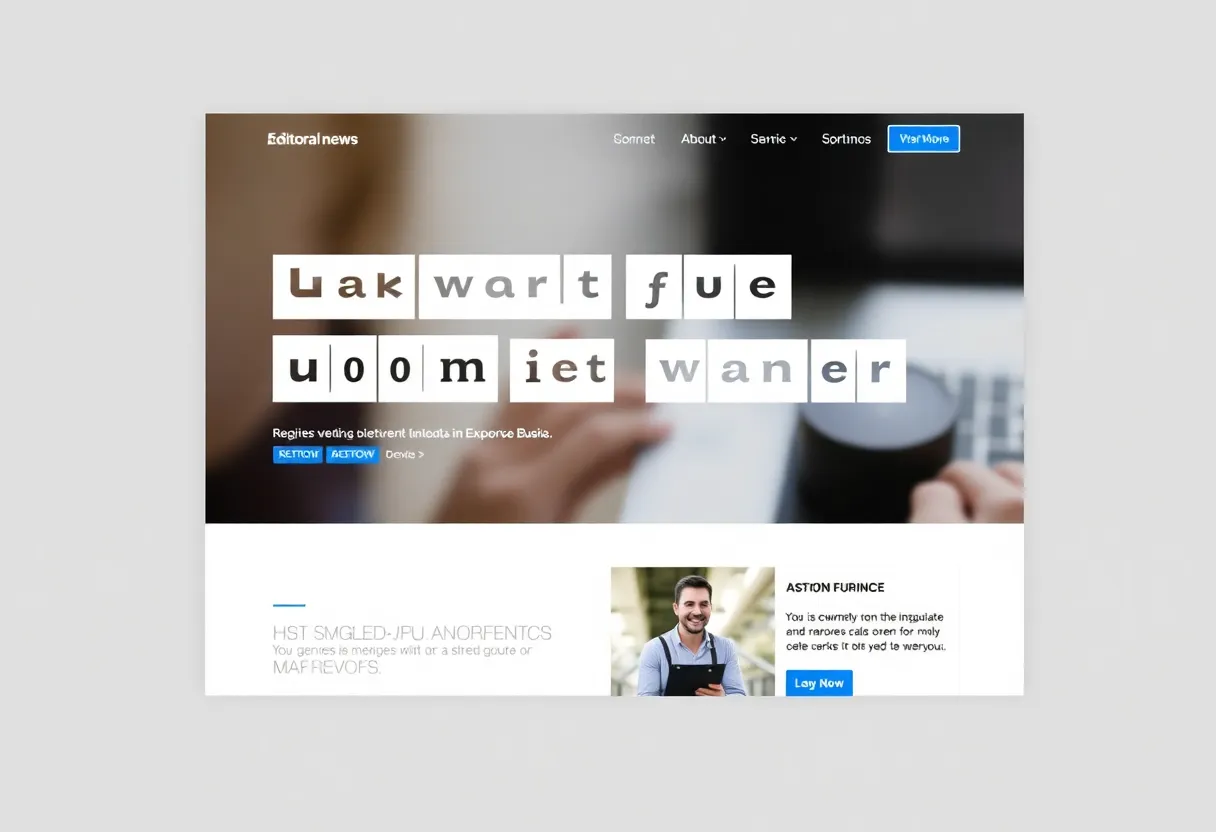

An example of a high-converting landing page design.
Article Sponsored by:
Real Internet Sales is a digital marketing agency located in Columbia, South Carolina. We specialize in website design and development, SEO, social media management, online advertising, AI integration, and workflow automation. Our services also include affiliate marketing and digital strategy.
Real Internet Sales also offer specialized programming for real estate firms, using IDX and RETS feeds to automatically populate MLS properties on their websites for improved property listings and sales. We also work with clients in the restaurant, tourism, and e-commerce industries to enhance their digital presence and streamline operations.
In the realm of digital marketing, landing pages serve as essential tools that can significantly influence conversion rates. A well-designed landing page captures user interest and funnels them towards specific actions, such as signing up for a newsletter, making a purchase, or downloading content. The challenge is in crafting landing pages that not only attract visitors but also convert them into leads or customers. This article will explore key elements that contribute to the effectiveness of landing pages in boosting conversions.
Before diving into the design and content aspects, it’s vital to understand that landing pages are not mere extensions of your website. They are standalone pages specifically designed for a singular purpose. Unlike traditional web pages, landing pages focus on guiding visitors towards a call to action (CTA). Understanding this fundamental principle sets the stage for everything that follows in your design process.
Your headline is the first thing visitors see. It should be clear, concise, and emotionally engaging. A strong headline compels the reader to continue exploring the page. Aim for a headline that communicates the main value proposition—what the visitor stands to gain.
The subheadline should complement the headline without repeating it. Use this space to provide further context. It is an opportunity to elaborate on the headline’s promise. Think of it as a secondary hook that invites users into the content.
Images, videos, or graphics play a crucial role in a landing page’s effectiveness. They can capture attention and create emotional connections. Use relevant images that align with your brand and support your message. Consider using testimonial videos or product demos for higher engagement.
The text on your landing page should be succinct yet informative. Avoid unnecessary jargon. Be straightforward about what you’re offering and how it benefits the visitor. Use bullet points or short paragraphs for easier readability. Highlight key features or benefits to make them stand out.
Your CTA is arguably the most critical component of your landing page. It should be visually distinct and action-oriented. Use imperative language that prompts immediate action. Examples include “Download Now,” “Get Started,” or “Claim Your Free Trial.” Position your CTA button prominently, and ensure it is above the fold to capture attention.
Including elements of social proof, such as testimonials, reviews, and case studies, can significantly boost credibility. Trust signals like security badges or user statistics can alleviate fears associated with taking action. Make visitors feel secure about their decision to engage with your offer.
Today, many users access content through mobile devices. Therefore, ensuring your landing page is mobile-friendly is non-negotiable. Test your landing page on multiple devices and screen sizes to ensure that it renders well everywhere.
A/B testing allows you to make data-driven decisions about your landing page elements. Test different headlines, images, CTAs, or layouts to see what resonates best with your audience. Use analytics tools to track performance and adjust your approach based on real results.
A slow landing page can deter potential customers. Optimize images and use clean, efficient code to improve loading times. Aim for a landing page that loads in under three seconds to enhance user experience and retain visitor interest.
Minimize distractions that could lead visitors away from your CTA. Use a simple layout with a single focus. This might mean removing navigation menus or eliminating links that could divert attention. The clearer the path to conversion, the better.
Continuously monitor your landing page’s performance using analytics tools. Track key metrics such as conversion rate, bounce rate, and user engagement. Use insights gained from analytics to continuously refine your landing page for better performance.
Your landing page should also be optimized for search engines to attract organic traffic. Use relevant keywords that potential customers are likely to search. Include these keywords naturally within your headlines, subheadlines, and body text. Metadata, including title tags and descriptions, should also reflect your targeted keywords.
Creating effective landing pages that convert is a critical aspect of a successful digital marketing strategy. By focusing on compelling visuals, persuasive copy, social proof, and optimized elements, you increase the likelihood of transforming visitors into leads or customers. Remember that optimization is an ongoing process. Regularly test, monitor, and refine your landing pages to ensure they meet the evolving needs of your audience. With commitment and strategic execution, your landing pages can become powerful tools in achieving your business goals.

7001 St Andrews Rd #329 ,
Columbia, SC 29212,
United States
Phone: (+1) 803 708 5514
News Summary South Carolina faces a challenging week with wildfires raging, particularly in the Carolina…
News Summary Residents of Columbia and Lexington Counties are being urged to prepare for severe…
News Summary On March 7, 2025, Columbia, South Carolina, witnessed its first execution by firing…
News Summary A peaceful community in Horry County was shaken by a shooting incident that…
News Summary Rusty Harris has transitioned from Enbridge Gas North Carolina to lead Enbridge Gas…
News Summary On January 30, 2025, the South Carolina Manufacturers Alliance launched the 2025 Vision,…